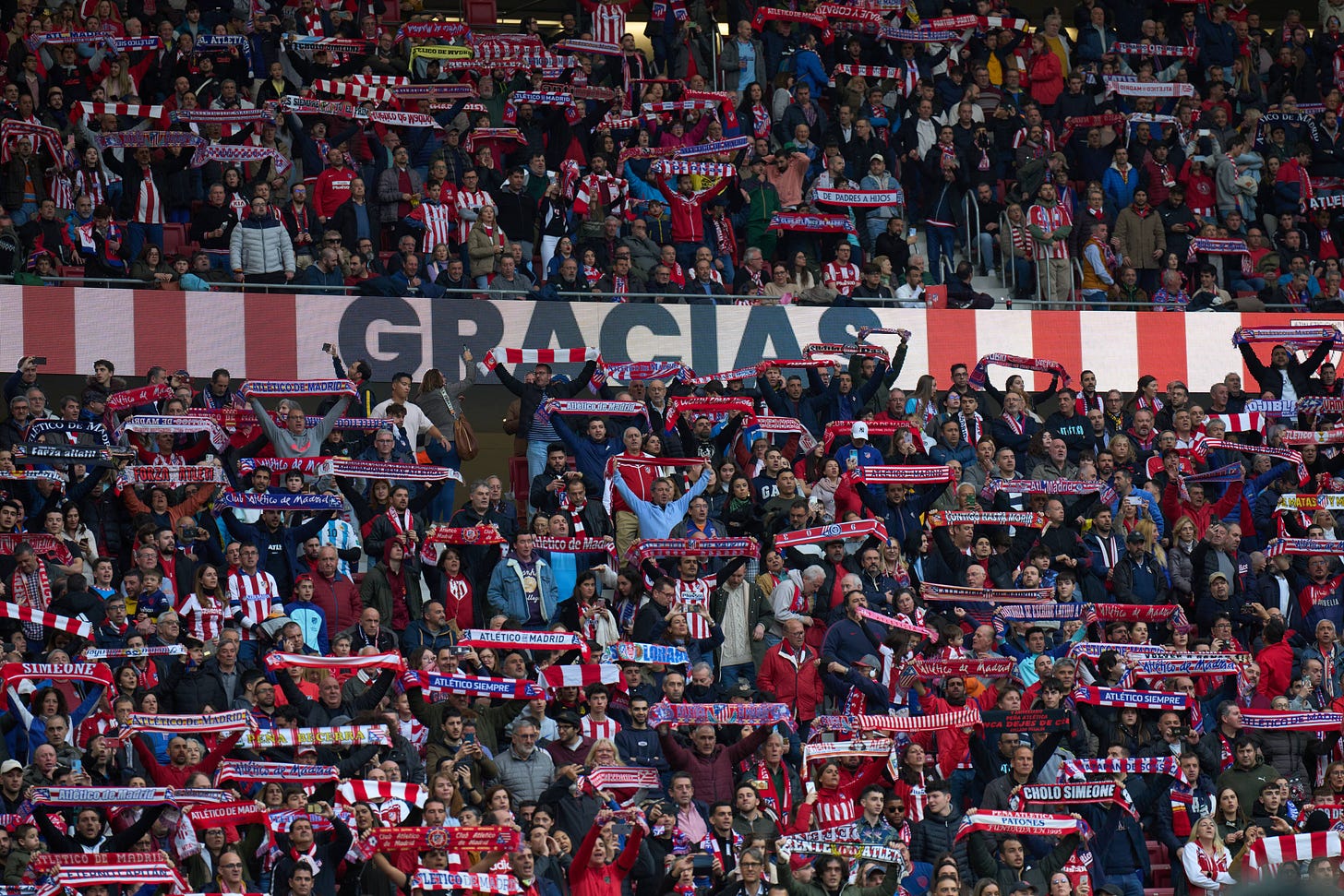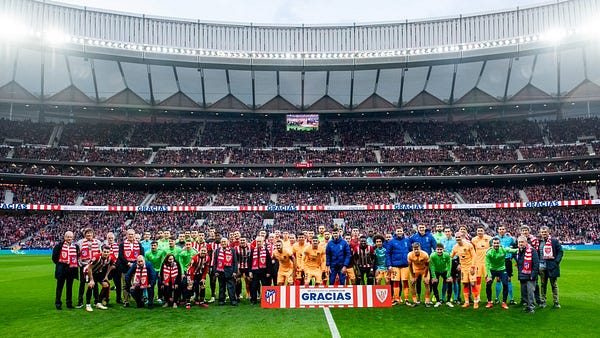Atlético Madrid say thank you to 'big brother' Athletic Club with classy gesture in LaLiga
The capital club wore orange on Sunday to allow the Basques to play in red and white

One common complaint about modern football is that teams wear their away kits when there is no colour clash. Clubs frequently switch their strips, often when it does not seem necessary. More often than not, the motives are financial: to sell shirts. But when Atlético Madrid wore orange at home to Athletic Club in LaLiga on Sunday night, the Rojiblancos were honouring the traditions of the game, their opponents, and also their own origins.
Athletic Club celebrate their 125th anniversary later this year and to mark that milestone, Atlético let the Basque club don their famous red-and-white jerseys at the Metropolitano on Sunday. Instead, the home side stepped out in orange. Why? Because the history of these two historic clubs is inextricably intertwined.
Almost five years after Athletic started life in 1898, Atlético were founded in Madrid by three Basque students in the capital. The idea was to form a Madrid subsidiary of their own club and they named it Athletic Club, Sucursal de Madrid (Athletic Club, Madrid Branch).
Initially, Athletic and Atlético played in blue-and-white halved jerseys. But by 1911, both were wearing their now famous red and white (after Bilbao student Juan Elorduy picked up 50 shirts in Southampton and brought them back on the ship home). Later, Atlético became known as the Rojiblancos (red and whites). So Atleti owe their existence – and also their colours – to the Basque club.
Ahead of the match on Sunday, red-and-white flags were waved as the two teams came out onto the pitch and Atlético’s fans sung the club’s anthem a cappella, holding their scarves aloft all around the stadium. On the screens, a special message was broadcast, a single word of gratitude to their opponents: ‘Gracias’.
The two sets of players then lined up alongside former players and managers who had represented both clubs (including Javier Clemente, Julio Salinas, Andoni Goikoetxea and Javier Irureta, plus Athletic Club’s current midfielder Raúl García) for an official photograph. In front of them, there was a board in the shape of a red-and-white scarf, featuring the two club crests and the same message: ‘Thank you’.
“It’s a really great gesture, a special detail on Atlético’s part to celebrate our anniversary,” former centre-back Goikoetxea said. Irureta, an attacking midfielder who enjoyed long spells at both clubs in the 1960s and 1970s, agreed. “It’s a really great gesture,” he said. “Athletic is Atlético’s big brother.”

Incidentally, this was not the first time Atlético had changed colours in order to honour Athletic. In a LaLiga game in 1990 at the Vicente Calderón, the Madrid side wore blue at home to mark the 50th anniversary of Atlético Aviación (an earlier incarnation of their team). Prince Felipe, now the King of Spain and an Atleti fan, was in attendance and Nobel Prize winner Camilo José Cela took the honorary kick-off.
Atlético won that match 2-0 and came out on top this time thanks to an Antoine Griezmann goal after 73 minutes. “Griezmann offers his respects,” Spanish sports paper Marca said.
On Twitter, journalist and Atlético fan Carmen Calvo summed up the mood. Alongside a photo of the two teams from her seat at the Metropolitano, she wrote: “Thank you Athletic Club, for having been the origin of a story of love.” Class.







